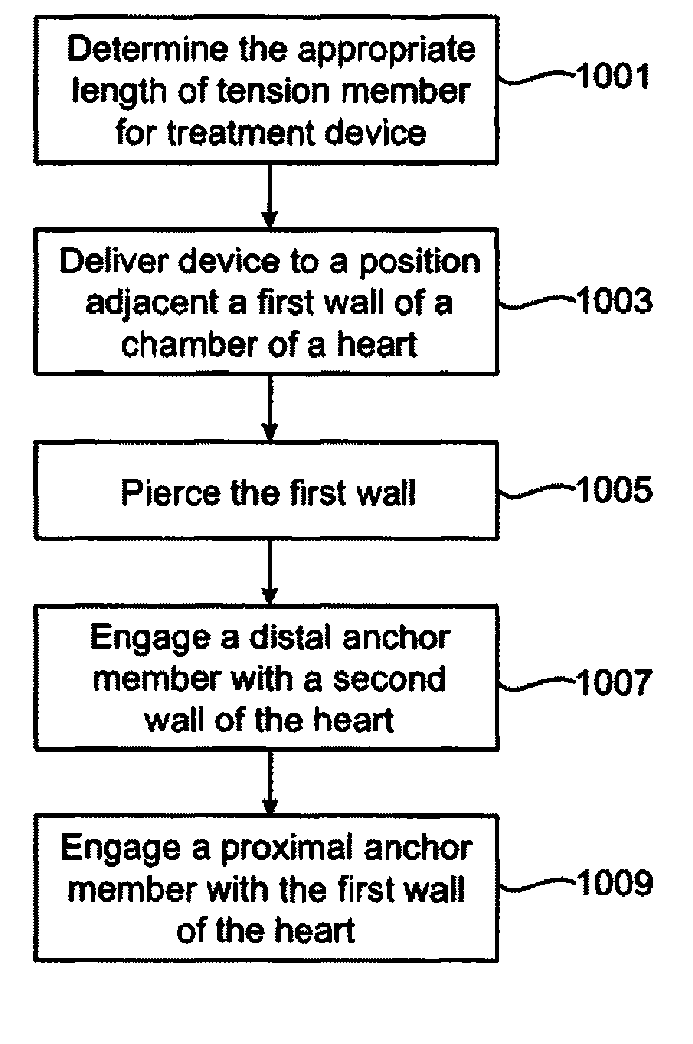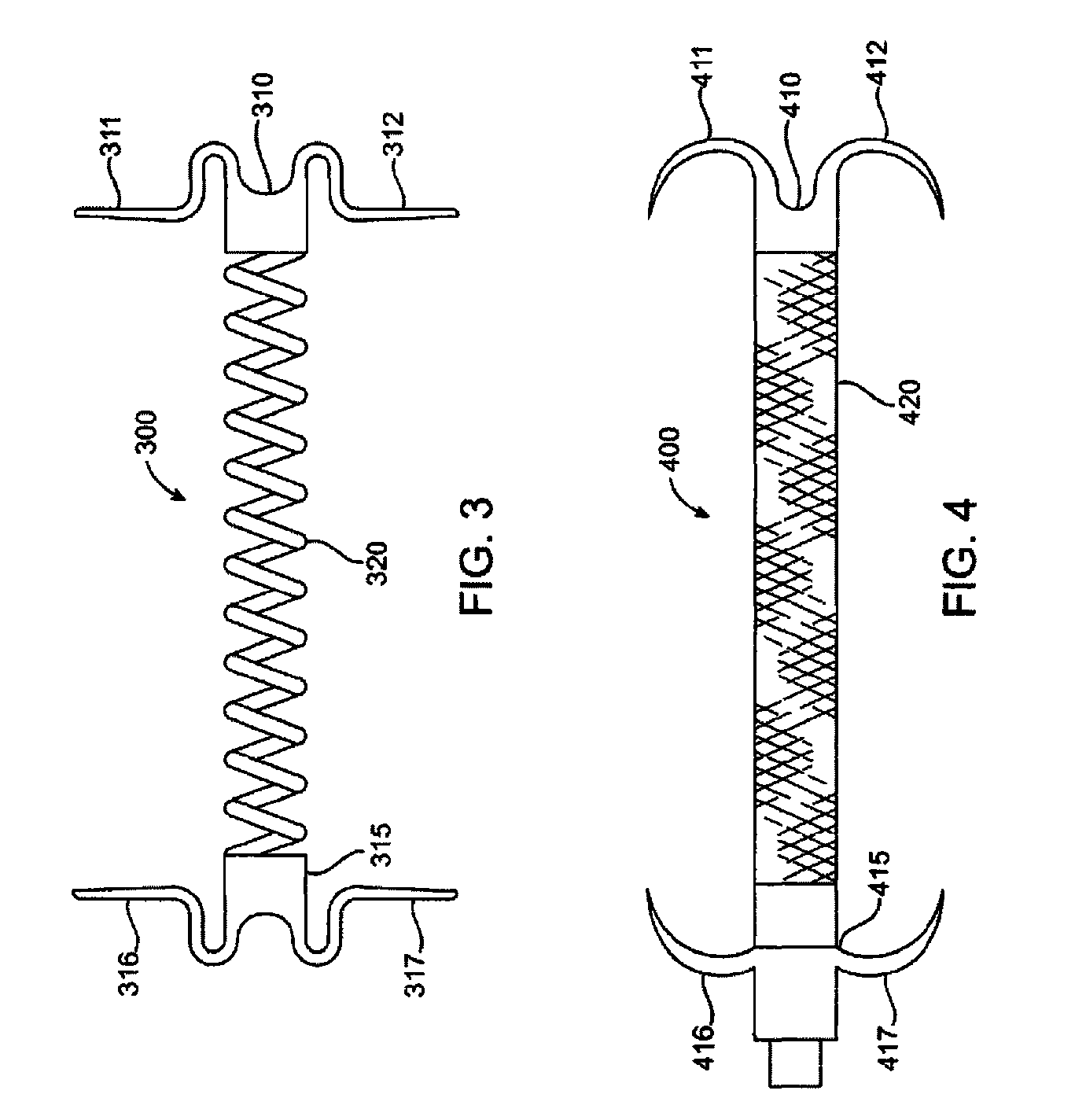Device for Treating Mitral Valve Regurgitation
a technology of mitral valve and device, applied in the field of medical devices, can solve the problems of distorting the shape of the mitral valve, reducing the ejection volume of the left ventricle, and the left ventricle to compensate with a larger stroke volume, so as to reduce fatigue, reduce the lateral distance, and dampen the shock to the supporting tissues
- Summary
- Abstract
- Description
- Claims
- Application Information
AI Technical Summary
Benefits of technology
Problems solved by technology
Method used
Image
Examples
Embodiment Construction
[0032] The invention will now be described in detail below by referring to the attached drawings, where like numbers refer to like structures. One aspect of the present invention is a device for treating mitral valve regurgitation by reducing the lateral space between the septal wall and the free wall of a heart chamber. One embodiment of a device, in accordance with the present invention, is illustrated in FIGS. 1 & 2, which show the device in a deployed / deployment configuration as opposed to a delivery configuration as depicted in FIG. 6.
[0033] Tensioning device 100 is designed to be positioned across a chamber of a heart so that it reduces the distance between the septum and the free wall of a heart chamber to alter the chamber geometry and wall tension, thereby reducing valvular regurgitation. Although described below in the context of treating mitral valve regurgitation by reducing or limiting lateral distension of the left ventricle as the heart beats, device 100 may be deplo...
PUM
 Login to View More
Login to View More Abstract
Description
Claims
Application Information
 Login to View More
Login to View More - R&D
- Intellectual Property
- Life Sciences
- Materials
- Tech Scout
- Unparalleled Data Quality
- Higher Quality Content
- 60% Fewer Hallucinations
Browse by: Latest US Patents, China's latest patents, Technical Efficacy Thesaurus, Application Domain, Technology Topic, Popular Technical Reports.
© 2025 PatSnap. All rights reserved.Legal|Privacy policy|Modern Slavery Act Transparency Statement|Sitemap|About US| Contact US: help@patsnap.com



